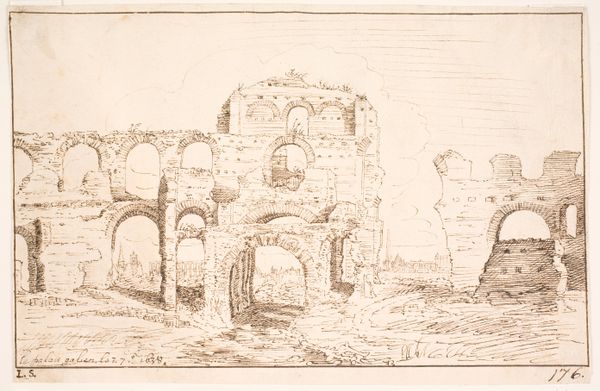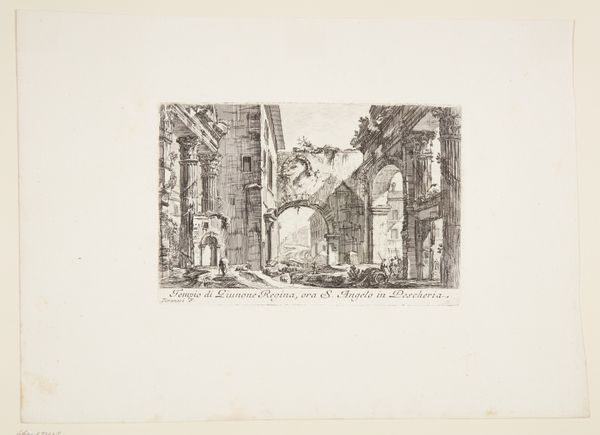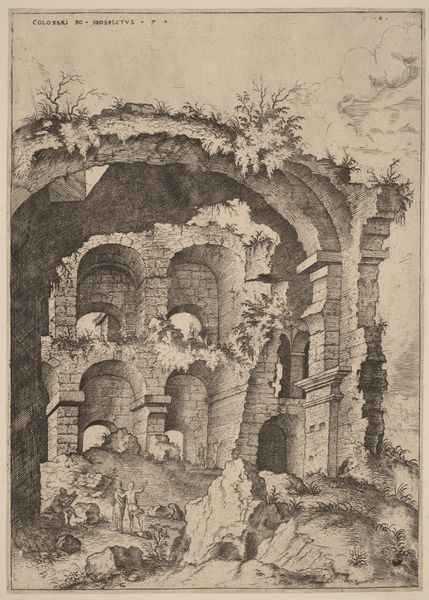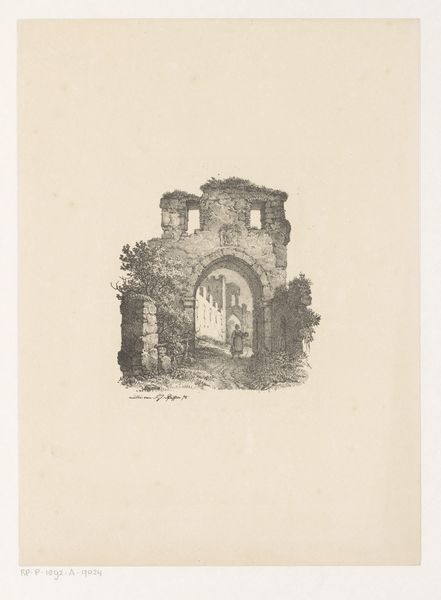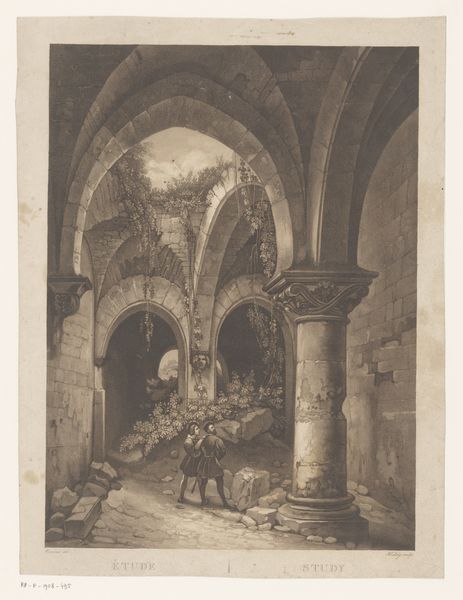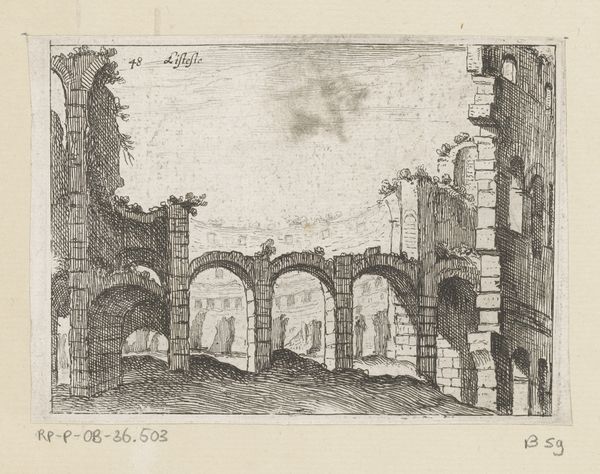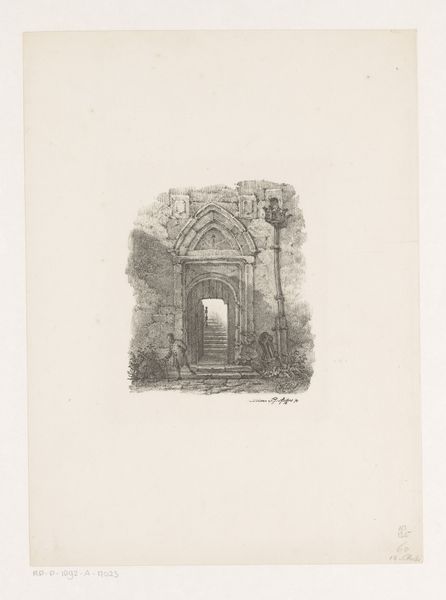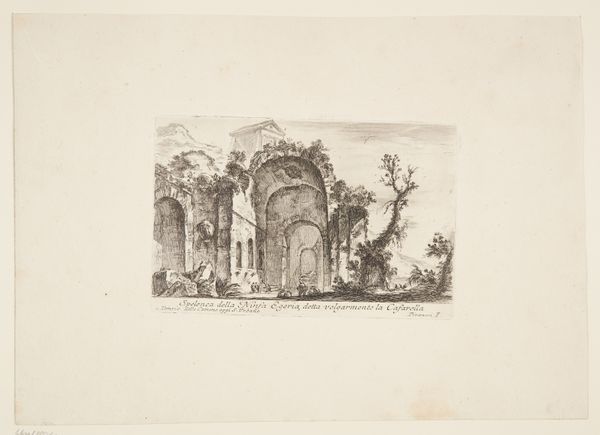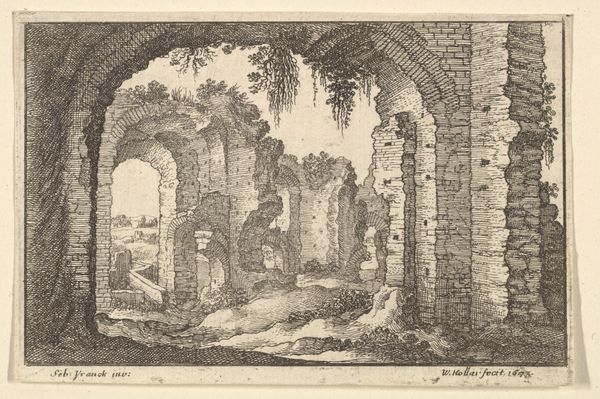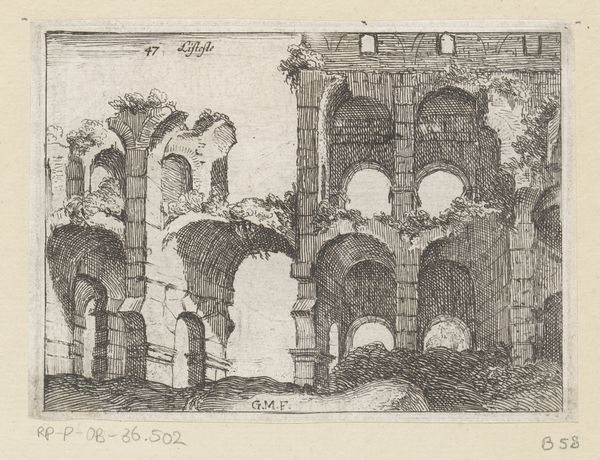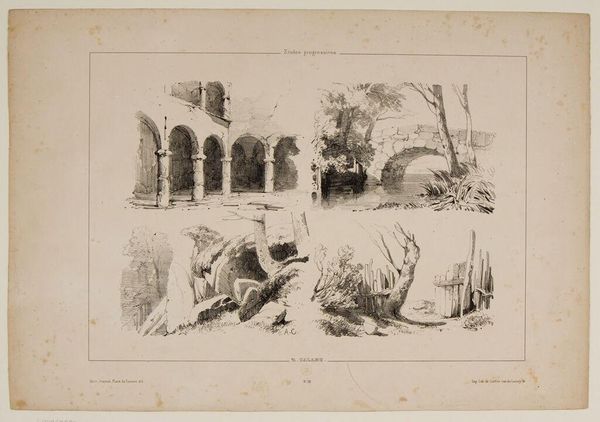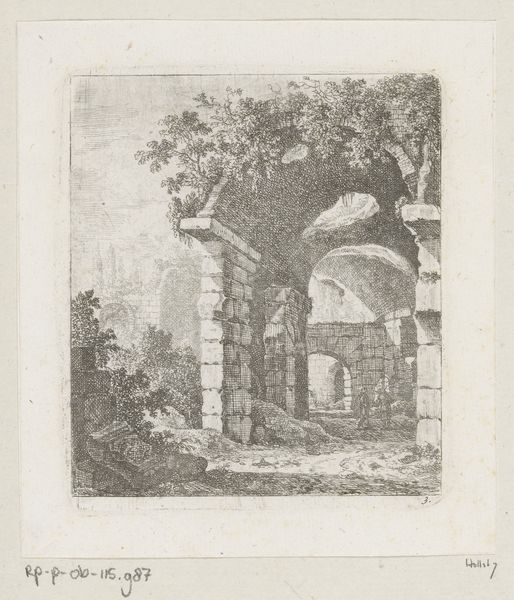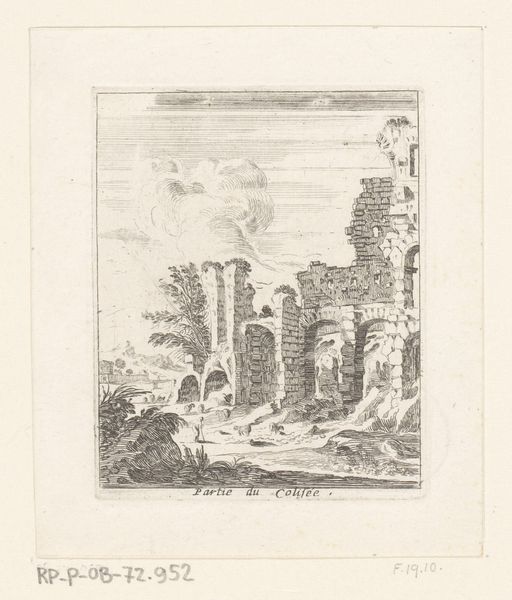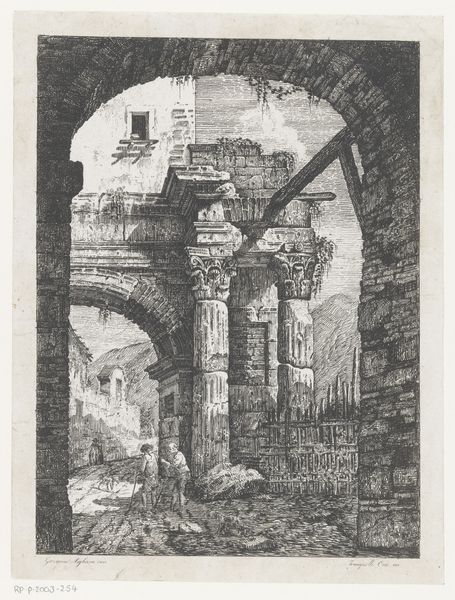
drawing, paper, ink, pencil
#
drawing
#
landscape
#
perspective
#
paper
#
form
#
ink
#
romanticism
#
pen-ink sketch
#
pencil
#
line
#
sketchbook drawing
#
cityscape
#
academic-art
#
realism
Dimensions: height 419 mm, width 289 mm
Copyright: Rijks Museum: Open Domain
Here is an etching by Louis-Julien Jacottet depicting a ruined archway, rendered in two stages of completion. The archway, a motif ubiquitous in Roman architecture, symbolizes triumph and transition. Yet, here, the arch is not a symbol of power but of decay. We are confronted with the transience of human achievement, a melancholic echo of past grandeur. Vines creep over the stone, nature reclaiming what was once ordered. This image of ruins summons a deep, almost primal response; it reminds us of our own mortality, the inevitable erosion of all things. Consider the arch as a recurring motif, from the triumphal arches of Rome to the Gothic cathedrals reaching towards the heavens. Each iteration carries the weight of its historical context, yet the underlying symbol of transition and aspiration remains. Here, though, the aspiration is inverted, the transition leading to oblivion. This is the eternal return, a cyclical process of building, decay, and rebirth that echoes through our collective consciousness.
Comments
No comments
Be the first to comment and join the conversation on the ultimate creative platform.
